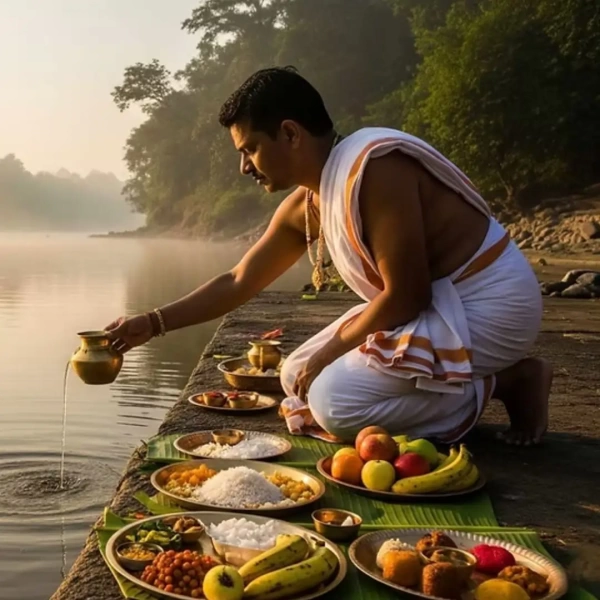
Gudiya Festival 2026: A Deep Dive into the Tradition of Doll Beating on Nag Panchami
Introduction to Gudiya Festival 2026
The Gudiya Festival 2026 is a rare and culturally rich tradition celebrated on Nag Panchami in select regions of eastern Uttar Pradesh and Bundelkhand. While the rest of India honors serpent gods with offerings and pujas, this unique festival includes the ritualistic beating of handmade cloth dolls, known as Gudiya Peetna.
Scheduled for Sunday, 16 August 2026, Gudiya Festival 2026 serves as a symbolic act rooted in mythology, astrology, social narratives, and emerging reforms. This blog explores the full scope of Gudiya Festival 2026, its origins, rituals, regional practices, controversies, and modern-day relevance.
See our list of August 2026 Hindu Festivals
The Broader Context of Nag Panchami
Nag Panchami is observed on the fifth day of the Shukla Paksha in the month of Shravan. It is dedicated to Nag Devta(serpent deities) across India.
- Devotees offer milk, turmeric, rice, and flowers to snake idols or live cobras.
- The day is spiritually linked to deities like Shiva and Vishnu.
- In Bengal and Assam, Manasa Devi is worshipped.
- In Maharashtra, snake charmers bring live cobras for public pujas.
- In southern India, anthills are venerated as serpent abodes.
Yet, Gudiya Festival 2026 stands apart for integrating a ritual of symbolic punishment through dolls, not seen elsewhere.
Mythological Origins of Gudiya Festival 2026
The Legend of King Parikshit
The most cited origin of Gudiya Festival 2026 comes from the Mahabharata. After King Parikshit dies from a snake bite by Takshak, his son initiates a mass serpent extermination. A girl shelters a surviving snake, and villagers, enraged, punish her. Over time, this evolved into the symbolic act of beating a doll to stand in for that girl.
The Sibling Protection Tale
In another version, a sister kills a snake to protect her brother and is cursed. A local priest advises the brother to beat a doll 11 times each side and bury it to absorb the curse. This origin story gives Gudiya Festival 2026 a more protective and familial context.
The Royal Daughter Story
In Bundelkhand folklore, a king suspects his daughter of dishonor and orders her public punishment. The violent act, over time, became ceremonialized as the beating of dolls on Nag Panchami.
How Gudiya Festival 2026 Is Celebrated
Doll Preparation
- Girls create cloth dolls from fabric and cotton, dressing them in tiny sarees.
- The dolls are decorated with mehendi, bindis, and jewelry-like items.
Stick Decoration
- Boys prepare decorated sticks, called chhadi, to be used in the ritual.
Public Beating Ceremony
- On the morning of Gudiya Festival 2026, villagers gather at a central location.
- Girls place the dolls on the ground.
- Boys beat the dolls in front of the community, sometimes accompanied by folk songs.
- The dolls are then buried or immersed in water.
Nag Devta Puja
- After the doll ritual, traditional Nag Panchami worship is performed.
- Devotees offer milk and flowers to snake idols or anthills.
Regions Where Gudiya Festival 2026 Is Celebrated
Areas Practicing Gudiya Peetna
- Sitapur, Raebareli, Kanpur Dehat, Hardoi, Sultanpur, Lucknow rural (Uttar Pradesh)
- Chitrakoot, Banda, Hamirpur, Panna (Bundelkhand)
Areas Without the Tradition
- Maharashtra, Gujarat, Rajasthan, Bihar: Observe only snake worship.
- Bengal, Assam: Focus on Manasa Devi.
- South India: Worship at anthills, no doll rituals.
Cultural Symbolism and Criticism of Gudiya Festival 2026
The Gudiya Festival 2026 ritual is rich in symbolism but also draws criticism:
- The doll represents feminine identity or social deviance.
- The beating signifies societal correction, symbolic violence, or purification.
- Critics argue it reinforces patriarchal narratives and passive femininity.
Reform Movements Around Gudiya Festival 2026
Gudiya Jhulana: Swing Instead of Beating
- NGOs like Mahila Samakhya in Sitapur introduced Gudiya Jhulana.
- Dolls are placed on swings and gently rocked instead of being beaten.
- This new version celebrates daughters and promotes gender respect.
Impact of Reform
- Adopted in several villages across eastern UP.
- Schools host storytelling sessions and alternative rituals.
- The focus is shifting from symbolic violence to symbolic affection.
Astrological Beliefs in Gudiya Festival 2026
- The ritual is believed to remove Kala Sarpa Dosha.
- Families use soil from the burial site of dolls to protect against evil.
- Priests sometimes endorse the ritual as a planetary remedy.
Public Fair and Festivities
Gudiya Festival 2026 also includes:
- Local fairs with food, bangles, and snake figurines.
- Kite flying competitions among boys.
- Traditional wrestling matches (dangals).
- Women singing Kajri songs under mango trees.
Generational Views and Urban Reinterpretation
- Older villagers defend the ritual as harmless fun.
- Young girls and urban youth are questioning its relevance.
- Some reinterpret the doll as a symbol of daughterly blessing.
Gudiya Festival 2026 in the Diaspora
- The ritual is unknown among most NRIs.
- Nag Panchami is celebrated abroad without doll traditions.
- A few UP-origin families narrate the ritual as folklore, omitting the violent parts.
The Future of Gudiya Festival 2026
- Some villages continue Gudiya Peetna unchanged.
- Others have adopted the swing ritual or discontinued the tradition.
- Reformers hope to replace symbolic violence with celebrations of daughters.
Conclusion
Gudiya Festival 2026 is a unique cultural phenomenon. Its layered meanings – from myth to astrology, gender to reform – reflect how tradition is both a mirror and a mold. Whether it continues in its current form or evolves further, it remains a fascinating insight into India’s diverse ritual landscape.
Internal Links for Further Reading
- Explore related customs like Kajari Teej

